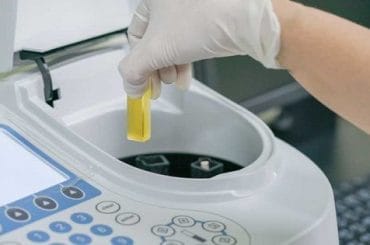This post is also available in:
Español
Português
Gushing is an undesirable phenomenon in beer characterized by an excessive and violent release of carbon dioxide (CO₂) when opening a bottle or can, leading to an uncontrollable overflow of foam and liquid.

This issue not only affects the consumer experience but can also result in economic losses for producers and damage a brand’s reputation.
Contenido
Detailed Analysis of the Causes of Gushing
Gushing is a multifactorial issue that can arise at various stages of beer production, from raw material selection to packaging and storage.
Below, we delve into the most common causes:
1. Presence of Hydrophobic Proteins and Calcium Oxalate
Hydrophobic proteins derived from malt, along with calcium oxalate, can act as nucleation sites, facilitating the uncontrolled formation of CO₂ bubbles when the bottle is opened.
These proteins are often found in low-quality or poorly processed malts, where inadequate control during malting or drying has occurred. In addition to causing gushing, these proteins can affect beer clarity and colloidal stability.
To minimize this issue, it is essential to use high-quality malts and ensure proper malting processes, which reduce the presence of these proteins and improve the final product’s stability.
2. Microbial Contamination
Contamination by unwanted microorganisms, such as wild yeast (Brettanomyces) or bacteria (Lactobacillus, Pediococcus), can produce metabolites that trigger gushing.
These microorganisms can be introduced during fermentation, packaging, or even through contaminated raw materials.
Besides gushing, microbial contamination can alter the beer’s flavors and aromas, leading to off-flavors such as excessive acidity or solvent-like notes.
To prevent this, rigorous hygiene and sanitation practices must be implemented at all production stages, including cleaning tanks, pipelines, and packaging equipment, as well as conducting regular microbiological testing.
3. Use of Wet or Poorly Stored Malts
Malts exposed to humid conditions or improperly stored can develop filamentous fungi, such as Fusarium. These fungi produce metabolites, such as deoxynivalenol (DON), which promote gushing.
Additionally, contaminated malts can introduce moldy or earthy flavors into the beer, negatively impacting its sensory profile.
To avoid this, it is crucial to store malts in a dry, cool environment and conduct quality tests to detect the presence of fungi before use.
Working with reliable suppliers who guarantee the quality of raw materials is also recommended.
4. Overcarbonation
Excessive or uneven carbonation can increase the internal pressure of the bottle, leading to gushing.
This can occur due to errors in forced carbonation processes or uncontrolled secondary fermentation in the bottle.
Overcarbonation can also cause the beer to foam excessively, making it difficult to pour and drink, thus affecting the consumer experience.
To control this issue, it is necessary to carefully monitor CO₂ levels during carbonation and ensure that secondary fermentation is well-regulated.
The use of precise measuring equipment, such as pressure gauges and hydrometers, is essential to achieve proper carbonation.
5. Inadequate Storage Conditions
Storing beer at high temperatures or exposing it to ultraviolet (UV) light can compromise its stability and trigger gushing.
High temperatures accelerate chemical reactions in beer, which can generate excess pressure in the bottle.
On the other hand, UV light exposure can degrade beer compounds, affecting its flavor and stability.
To prevent these issues, it is advisable to store beer in a cool, dark, and stable environment, away from heat sources and direct light.
Additionally, using opaque packaging, such as amber glass bottles or cans, can protect the beer from UV light.
Strategies to Control Gushing
To prevent and control gushing, brewers must implement best practices at all stages of production, from raw material selection to packaging and storage.
Key strategies include:
Raw Material Selection
Use high-quality malts free from fungal contamination and ensure they are stored under optimal humidity and temperature conditions.
Microbiological Control:
Implement strict hygiene and sanitation protocols in the brewery to avoid contamination by wild yeast or bacteria.
Carbonation Adjustment
Ensure CO₂ levels are appropriate for the beer style and that carbonation is uniform.
Use of Additives
Incorporate anti-gushing agents, such as ascorbic acid or tannins, which help stabilize the beer and reduce the formation of nucleation sites.
Proper Storage
Maintain beer in a cool, dark, and stable environment to preserve its quality and prevent unwanted chemical reactions.
Final Conclusions
Gushing is a complex challenge that requires attention to multiple aspects of beer production and handling.
By understanding its causes and adopting preventive measures, brewers can ensure the stability and quality of their products.
Preventing gushing not only enhances the consumer experience but also strengthens the brand’s reputation and ensures product consistency.
We recommend
- Anton van Leeuwenhoek: The Father of Microbiology and Optical Microscopy
- India Pale Ale Beers (IPA): Origin, History and Main Features







